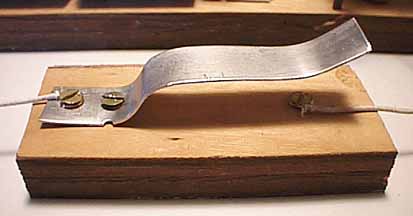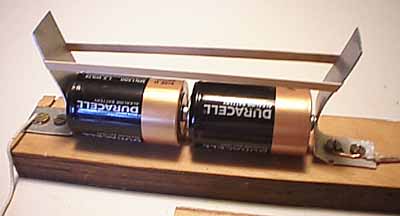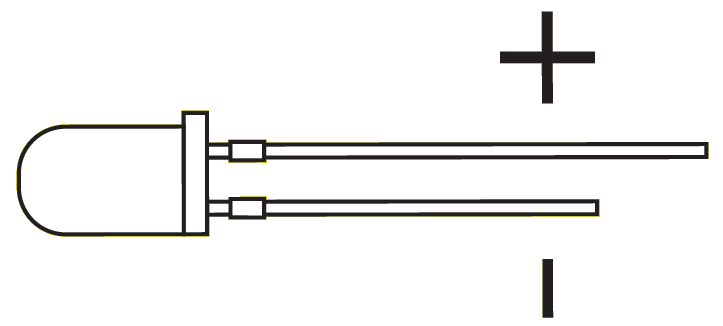
Note: I have my comments on these, if you like one of the experiments that I don't' choose, or don't like and you thinks it's awesome, totally ignore me and do it your way,
!!!!This is just all my personal opinion !!!!
I'll try to add links even for the ones I don't like. after you are done send me info on how you did it and I'll add it if it's unique and cool!
Webelos/AOL Elective Adventure: Adventures in Science
Do all of these:An experiment is a "fair test" to compare possible explanations. Draw a picture of a fair test that shows what you need to do to test a fertilizer's effects on plant growth.
Example of fair test including this one
1. Visit a museum, a college, a laboratory, an observatory, a zoo, an aquarium, or other facility that employs scientists. Prepare three questions ahead of time, and talk to a scientist about his or her work.
.
Get the questions written down ahead of time,
My wife works at a cancer research center, if I find and easier one I'll post it here, but it's going to be Pflugerville, TX specific.
Questions to ask yourself if you can't think of a science lab near you
Is there a university you can go visit?
What about a geology, highway and building departments use geologists.
What about a nature preserve, aquarium or zoo? All forms of Biological sciences..
Remember they don't have to be doing hard science, if you live in a really small town, find someone who has a bachelors in science or does lab work.
Maybe for the local clinic or Vet...
All it needs is some one who studied science, and uses some of that knowledge in work.
Lots of engineering type sciences if you get really stuck, master electricians and the like, but try chemistry or biology...first, A vet can talk about the scientific method in diagnosis and the biology involved...
Or a Dr... Or a medical technician who's doing the tests for a Dr.
Don't let the fact that you don't know some one who's running the Cern supercollider stop you from finding a scientist... a Scientist is some one who studied and applies the scientific method... that's all...
.
2. Complete any four of the following:
- Carry out the experiment you designed for requirement 1, above. Report what you learned about the effect of fertilizer on the plants that you grew.
- IMHO Dont' do this one as a den activity, it's great at home, buy why do an activity that's going to take weeks at a den meeting?
- If you really want to do this, look at the links in Req 1,.
- Carry out the experiment you designed for requirement 1, but change the independent variable. Report what you learned about the effect of changing the variable on the plants that you grew.
- See choice a
- Build a model solar system. Chart the distances between the planets so that the model is to scale. Use what you learn from this requirement to explain the value of making a model in science.
- Here is a great word doc on making a scale solar system in your back yard
- You can see in detail how I did this experiment here:
- We built a model on the 100' scale filling my backyard, and it took us about 10 min to build it and learn a lot from it.
- With adult supervision, build and launch a model rocket. Use the rocket to design a fair test to answer a question about force or motion.
- We do a rocket-thon every fall so this one is free for me!
- If you have never done it you need a launch kit, and a rocket
- The launch kit includes the expendables (motor, wadding, ignitor) for a couple launches
- Each boy needs a rocket, a motor an ignitor and wadding, for each launch
- This is the rocket we built first, it's so easy, literally snaps together
- We buy them in bulk and every Tiger gets one of these, then each year they gets a bigger and harder rocket.
- This is a launch kit with the 2nd rocket we build, it's not snap together, but it's the next easiest
- There are lots of great how to videos on you tube spend time looking at them. There is way to much for me to break down here. Find a build video of your rocket by name, then look up how to pre for launch and launch videos at minimum.
- Create two circuits of three light bulbs and a battery. Construct one as a series circuit and the other as a parallel circuit.
- I have a whole kit for these already I made test leads(click her to get them from amazon_), wires with alligator clips on both ends
- You can buy a switch or make one
- This kit has 2 switches 2 bulbs, and test leads and battery holder all you need is one more bulb holder and a bulb for it, but it's only for one scout at a time...
- I'm trying to figure out a cheap way to build a kit for each boy, so there is no waiting, here is my current thinking
- Test leads,
- Going to need 8 or 10 per scout,
- So maybe just wires and wrapping around nails...
- Button cells
- Pick your voltage to match your LED or Bulbs
- Many LEDs required minimum 4.5 v... so plan accordingly
- Match the voltage of your batteries to your leds.
- You can just tape the wires to a button cell and use that, even if you have to stack the cells
- Or make a battery holder from a binder clip
- Here is a short lesson in the voltage fo standard watch button cells
- A 2032 button cell the 20 is the size (20mm) the 32 is the voltage 3.2v
- So a 2025, is 20mm 2.5v. etc...just get the voltage you nee
- If you want to use big cells, try this, just make sure you have enough voltage for whatever lamps you use.
- OPTION1 - LEDs..
- You Dont' need to buy a base, just clip straight to the leads.
- You can get 20-100 for around $10, as opposed to $5+ each for a bulb and base
- Remember polarity, a diode is a 1 way gate for electricity, so a LED (light emitting diode) hooked up backwards, is basically an open circuit. (not going to do anything)
- When you get your leds check the voltage range, and buy a matching button cell,
- If you add to much voltage it makes it brighter but shortens the life, eventually so short it just dies...life is easier if you don't over drive the LEDs.
- If you add to little voltage it will dim, or maybe not light up at all...
- OPTION 2 - If LEDs are to complex, get regular bulbs and use conductive glue to glue wires to them for hookup
- The bulbs above are 2.5v so you can glue wires to a single D,C or AA or AAA battery and they will work dimly as your power source..better to tape up two of them or glue them up for 3v.
- 3.6v bulbs like the ones above, to be safer with 2 batteries
- Clean everything with alcohol before gluing, after gluing tape in place to hold it while the glue drys.
- Test everything before the meeting.
- Then simple switches with thumbtacks and paper clips.
- or make a press button switch like this

- Connect it all together on nails on a board , like a bread board
- HERE is a full step by step of how We did it, included printable circuit diagrams, Max easy, Max Awesome (but i spent about $40)
- Examples lower down on this page.
- Brass nails are good, but not required plain old ones work too, especially galvanized ones.
- Fancier examples here
- Print out a circuit diagram and copy it literally like this
- Or cardboard
- I'll try to remember put up pics when we do it
- Study the night sky. Sketch the appearance of the North Star (Polaris) and the Big Dipper (part of the Ursa Major constellation) over at least six hours. Describe what you observed, and explain the meaning of your observations.
- Six hours, are you on crack? Not doing this one... These are 4th graders...
- If you do this, and have an android phone get Google Sky Map, it's awesome, point you cell phone at the constellation of stars you want to identify and it shows it to you in real time. I'm sure IPhone has something similar, but i don't know it's name.
- If what I'm saying about google sky map doesn't' make sense, watch this movie
- With adult assistance, explore safe chemical reactions with household materials. Using two substances, observe what happens when the amounts of the reactants are increased.
- Totally doing this!! Baking soda and vinegar reaction here we come!
- Note you don't' have to dissolve the baking soda in water, this works find dry too!
- Get a disposable aluminum Turkey basting pan to put this in so it's easy to clean up, bubbles go everywhere... (I'm doing it on the back porch!!)
- We did drops of vinegar in the bottom of a clear plastic cup sprinkled with baking soda, and then did the experiment again with lots of both.
- Cups like these made great test tubes and beakers,
- 1 for baking soda
- 1 for vinegar
- 1 to mix them in , in various quantities
- 1 plastic spoons for measuring the dry ingredients
- I also reused my disposable droppers from Bear Sink & Swim experiment from last year... and it worked great for the small quantity experiment they sprinkled baking soda on the bottom of the cup then dripped in single drops of vinegar, then for the big one we put half a cup of soda and half a cup of vinegar together..sploosh!
- Explore properties of motion on a playground. Does the weight of a person affect how fast they slide down a slide or how fast a swing moves? Design a fair test to answer one of those questions.
- Study weight and amount of effort on a swing set... done!
- Play Ground Science
- More Playground Science
- Science on the Playground (grade 1-2 but you can get ideas)
- Read a biography of a scientist. Tell your den leader or the other members of your den what the scientist was famous for and why his or her work is important.
- I like to pick enough good biographies to have one for each boy, plus some spares. Print them out and have the kids each pick one, read it (with parental help) and answer the questions. Then tell what they thought was cool about their person.(Parents are allowed to help remind them)
- My Pre Made document to print out, staple and hand out,
- have the boys pick one,
- Read it with parent
- And return to tell a few interesting facts about their scientist.
- ez peezy, done.
- Kids scientist and inventor biographies,
- Really short ones(maybe too short)
- Biographies organized by type of science.
- More medium length ones, scientists in the right of center column
Workbook for use with these requirements: PDF Format DOCX Format





No comments:
Post a Comment